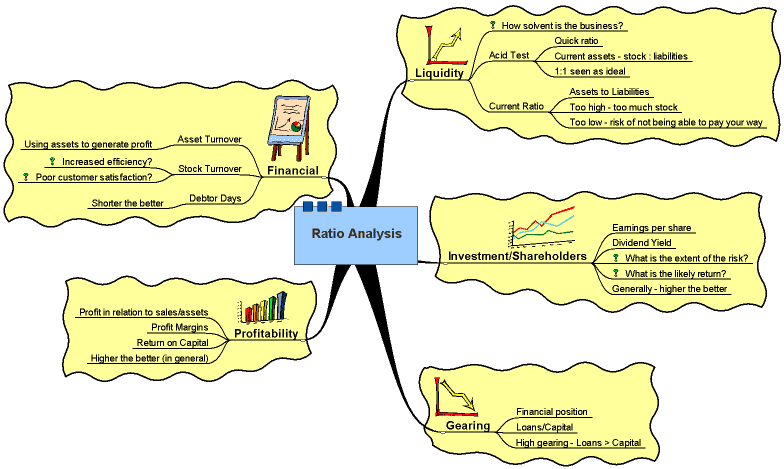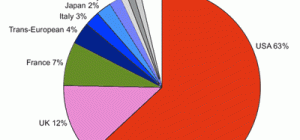 It is recommended that trend analysis be used when evaluating the balance sheet, income statement, statement of cash flows, and ratios. Ideally, five years' worth of data should be used. Trend analysis is the comparing of key ratios from each year against industry norms to pinpoint movement toward improvement or decline in a business and to identify unusual items.
It is recommended that trend analysis be used when evaluating the balance sheet, income statement, statement of cash flows, and ratios. Ideally, five years' worth of data should be used. Trend analysis is the comparing of key ratios from each year against industry norms to pinpoint movement toward improvement or decline in a business and to identify unusual items.
No ratio can be looked at in isolation. For example, most credit professional believe that a quick ratio of 1 is a good indication of a financially stable company, but it is important to do a little digging into that number.
The quick ratio is defined as cash, marketable securities, and accounts receivable divided by current liabilities. If the company with a quick ratio of 1 also has a days sales outstanding of 65, when the industry norm is 45 that quick ratio no longer looks so good. There might be receivables that are not collectible. Thus, the quality of the accounts receivable must be good in order for that quick ratio to mean anything positive.
Listed below are the seven ratios credit professionals can use when evaluating unsecured trade creditors along with an indication of what the ratio signifies:
1. Quick ratio defines the degree to which a company's current liabilities are covered by the most liquid current assets.
2. Days sales outstanding (DSO) shows the average days it takes for the customer to collect its receivables.
3. Accounts payable turnover shows the average number of days that it takes the customer to collect its receivables.
4. Inventory turnover shows the average days that the customer takes to turn its inventory once.
5. Debt to tangible net worth indicates the ability of a firm to leverage itself. It shows how much the owners and creditors have invested in the firm. A high number reflects a potential danger to all creditors.
6. Gross profit margin is only meaningful when compared to the industry.
7. Return on investment reflects the efficiency of management's performance.







